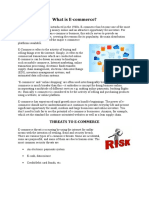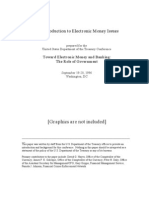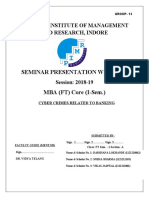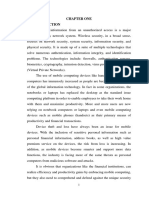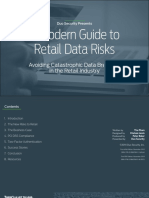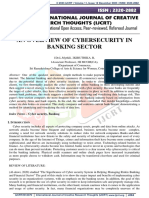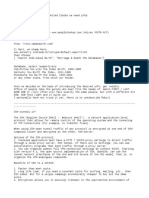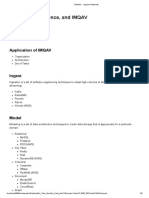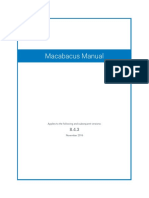0% found this document useful (0 votes)
95 views5 pagesPos Fraud Trends and Counter-Actions To Mass Fraud: iSIGHT Partners, USA
This document discusses trends in point-of-sale (POS) fraud and countermeasures. It notes that POS fraud was little discussed until 2013 but has since increased significantly, with thousands of retail stores announcing breaches. Fraudsters are now able to capture debit card PIN values in some cases. Smaller organizations often have fewer resources to dedicate to securing POS systems. Larger organizations may struggle with communication between security and IT groups and information overload. The document examines vectors for POS attacks such as insiders, contractors, phishing, and weak security practices.
Uploaded by
drewqq krishnaCopyright
© © All Rights Reserved
We take content rights seriously. If you suspect this is your content, claim it here.
Available Formats
Download as PDF, TXT or read online on Scribd
0% found this document useful (0 votes)
95 views5 pagesPos Fraud Trends and Counter-Actions To Mass Fraud: iSIGHT Partners, USA
This document discusses trends in point-of-sale (POS) fraud and countermeasures. It notes that POS fraud was little discussed until 2013 but has since increased significantly, with thousands of retail stores announcing breaches. Fraudsters are now able to capture debit card PIN values in some cases. Smaller organizations often have fewer resources to dedicate to securing POS systems. Larger organizations may struggle with communication between security and IT groups and information overload. The document examines vectors for POS attacks such as insiders, contractors, phishing, and weak security practices.
Uploaded by
drewqq krishnaCopyright
© © All Rights Reserved
We take content rights seriously. If you suspect this is your content, claim it here.
Available Formats
Download as PDF, TXT or read online on Scribd
/ 5


























